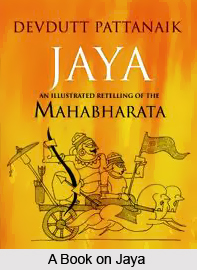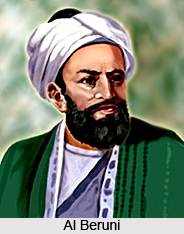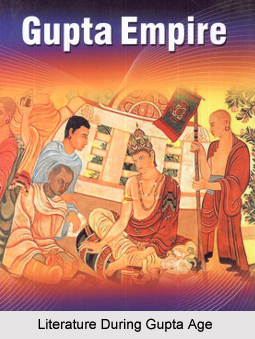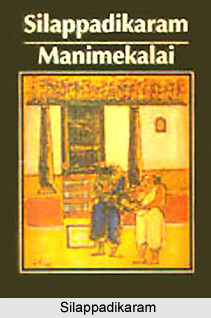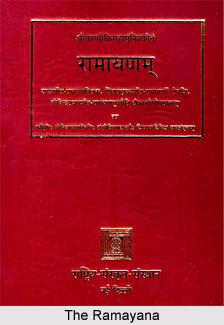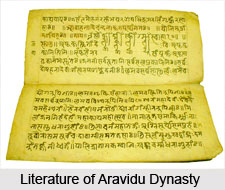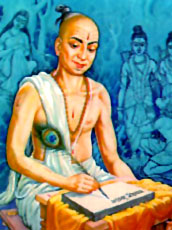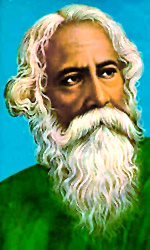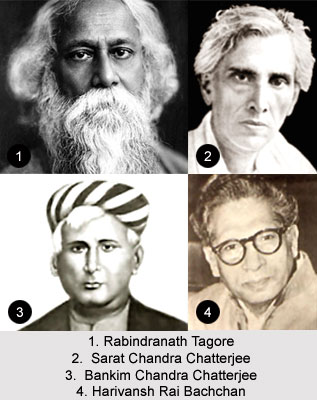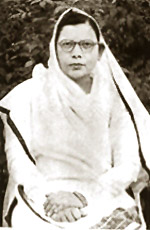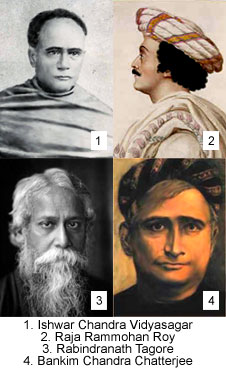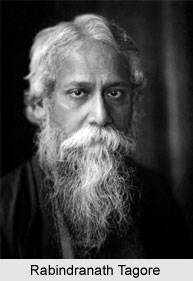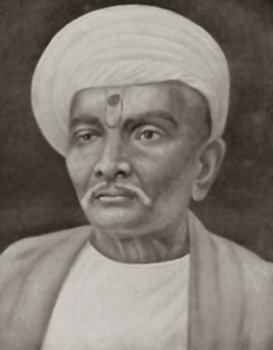 Gujarati literature in the nineteenth century reflected the trends and outlooks that had developed in Gujarat with the coming in of British rule. Similar to the rest of the country, British rule aroused a mixed reaction in Gujarat. For some people, it was like a blessing as it had apparently brought stability and introduced modern means of transport and communication and the benefits of scientific and industrial development. For some others, though they were happy to have contact with the West through English education, were dissatisfied with alien rule and had started thinking in terms of individual and national freedom. It was this divided thought process that was reflected in the literature of Gujarat in the nineteenth century. It was the beginning of modern Gujarati literature, and the foundation was laid for all literary developments in the latter half of the nineteenth century and all through the twentieth century.
Gujarati literature in the nineteenth century reflected the trends and outlooks that had developed in Gujarat with the coming in of British rule. Similar to the rest of the country, British rule aroused a mixed reaction in Gujarat. For some people, it was like a blessing as it had apparently brought stability and introduced modern means of transport and communication and the benefits of scientific and industrial development. For some others, though they were happy to have contact with the West through English education, were dissatisfied with alien rule and had started thinking in terms of individual and national freedom. It was this divided thought process that was reflected in the literature of Gujarat in the nineteenth century. It was the beginning of modern Gujarati literature, and the foundation was laid for all literary developments in the latter half of the nineteenth century and all through the twentieth century.
The divergent views are best seen in the works of the poets Dalpatram (1820-98) and Narmad (1834-86). Though products of the same age, they were poles apart in their attitudes towards British rule. Dalpatram, who knew no English, was encouraged in his literary efforts by an Englishman, Alexander Kinlock Forbes, the magistrate in Ahmedabad, who was interested in the development of the Gujarati language. The Gujarat Vernacular Society was his brainchild. Thus for Dalpatram, British rule was a blessing. But Narmad, who had the advantage of English education, was possessed with the ideas of freedom and liberation from British rule. It is a point to note that both of them shared certain common views on some issues, such as the need for social reforms like opposition to child marriages, encouraging widow remarriages, protecting Indian culture, and education etc. However they still differed rather markedly in their views. In the case of social reforms Dalpatram favored slow change whereas Narmad was more radical.
Prose in Nineteenth Century literature of Gujarat
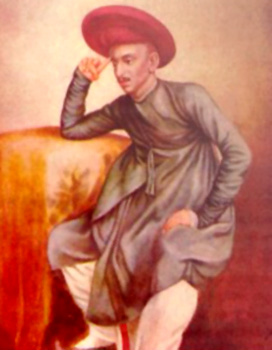 As regards the prose-writing of the two, they wrote quite substantially even in this field in the nineteenth century. Dalpatram, an authority on meters, wrote a treatise called Pingal (Prosody) a sourcebook for scholars for many decades. Narmad`s prose writings included essays, history, autobiography and even a play. Single-handedly, he prepared a Gujarati dictionary (Narmakosh). He wrote profusely on education and social reform in the weekly Dandiyo, published at his own expense, to propagate his reformist ideas. He was completely devoted to the pen, facing hardships and poverty with the courage of a warrior.
As regards the prose-writing of the two, they wrote quite substantially even in this field in the nineteenth century. Dalpatram, an authority on meters, wrote a treatise called Pingal (Prosody) a sourcebook for scholars for many decades. Narmad`s prose writings included essays, history, autobiography and even a play. Single-handedly, he prepared a Gujarati dictionary (Narmakosh). He wrote profusely on education and social reform in the weekly Dandiyo, published at his own expense, to propagate his reformist ideas. He was completely devoted to the pen, facing hardships and poverty with the courage of a warrior.
Dalpatram and Narmad, in their different ways, pioneered new literary trends into Gujarati literature. Poets and writers of the later period did not necessarily imitate them but picked up their literary strands to which they added their own improvements. In the next few years, a number of writers particularly cultivated prose, setting the stage for its further development. The growing influence of the English language, far from subduing the Gujarati language, added new dimensions to it. Efforts were made to evolve appropriate expressions to effectively convey thoughts and human emotions appropriate to Gujarati sensibility.
A notable attempt was the first Gujarati historical novel, Karanghelo (1866) by Nandshankar Tuljashankar Mehta (1835-1905). Gujarati prose had not yet developed to suit that genre, but the novel is important as a first step. His contemporary, Navalram Pandya (1836-88), an educationist and social reformer who edited the then-prestigious journal Shalapatra, wrote, in more cultivated prose, Narmad`s biography translated Kalidasa`s Meghaduta, Moliere`s play `The Mock Doctor` as `Bhatnun Bhopalun` (1867), and wrote an original play, Virmati Natak (1869). He molded Gujarati prose as a vehicle for creative writing and criticism.
Several writers of that period and succeeding decades further developed Gujarati prose with their novels, essays, travelogues, biographies, autobiographies, and journalistic writings. Periodicals like the Buddhiprakash Satyaprakash, Rastgoftar also promoted such writing in Gujarati. Durgaram Manchharam (1809-76), a renowned teacher and social reformer, kept a record of his public activities and also wrote his autobiography. Some time later, Nanilal Nabhubhai Dwivedi, a social reformer and an upholder of women`s education, started the monthly Priyamvada (1864), later changed into Sudharshan (1890), to propagate his ideas about women`s education. He recorded his personal experiences in Atmanimajjan (1895). But Kanta Natak (1882), as the first attempt of a well-structured play, is said to be his most important contribution. He also found the essay form a convenient medium to express his views about education and social reform. His graceful prose bears the mark of his vast learning.
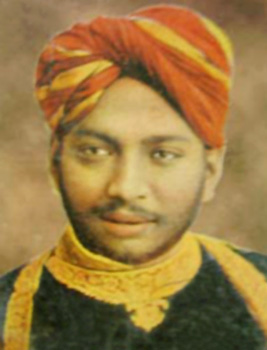
Poetry in Nineteenth Century literature of Gujarat
Dalpatram and Narmad were the first to introduce into Gujarati poetry subjects related to common life, a far cry from the predominantly religious and occasionally romantic and narrative poetry of the earlier period. However, their differences were still rather marked.
Dalpatram`s poetry had commonplace subjects like "trees in a college compound," English law, or even how to write an essay and was replete with his typical sense of humour. But Narmad`s poetry, written in a serious strain, had subjects of direct social relevance, reflecting his impatience and recklessness Influenced by English poetry, he also wrote poems about personal love, patriotism, freedom, nature, and so on.
During the nineteenth century, apart from the works of Dalpatram and Narmad, Gujarati poetry made further strides. Balashankar (1858-99), a bohemian by nature, wrote erotic poetry, combining the Shakta and Persian influences. Balashankar`s brief and stormy career has remained a subject of curiosity and criticism. His freer diction stands apart from the general tone of Gujarati poetry of his time.
Balashankar`s contemporary Kant (1867-1923) was also an innovative poet, but in a different way. He wrote khandakavyas (narrative poems) depicting with intensity sentiments of love and friendship in a picturesque and fluent style. He also wrote highly subjective lyrics. Purvatap (1923), the collection of his poems, was published on the day he died. Kant, who experienced a long period of religious conflict, remained a Christian at heart. He is remembered most for his metrically perfect and emotionally rich khandkavyas and lyrics.
A highly sensitive and romantic poet of this time was Kalapi (1874-1900), who died young but left behind a fairly large number of poems collected as Kalapino Kekarav (1931). He started under the influence of Dalpatram and Narmad but was later fascinated by English romantic poets, Narasinghrao`s nature poems and lyrics, Balashankar`s ghazal (verse) and Kant`s khandakavyas. His highly subjective poetry, full of delicate emotions, reflects anguish of love in his own life. He wrote some ghazals, too, combining Sufism and Advaita philosophy. His Kashmirno Pravas (1912) is the first "creative travelogue" in Gujarati, a specimen of good prose.
Thus the nineteenth century literature of Gujarat saw both attitudes adopted towards British rule- of acceptance as well as the call for change.
